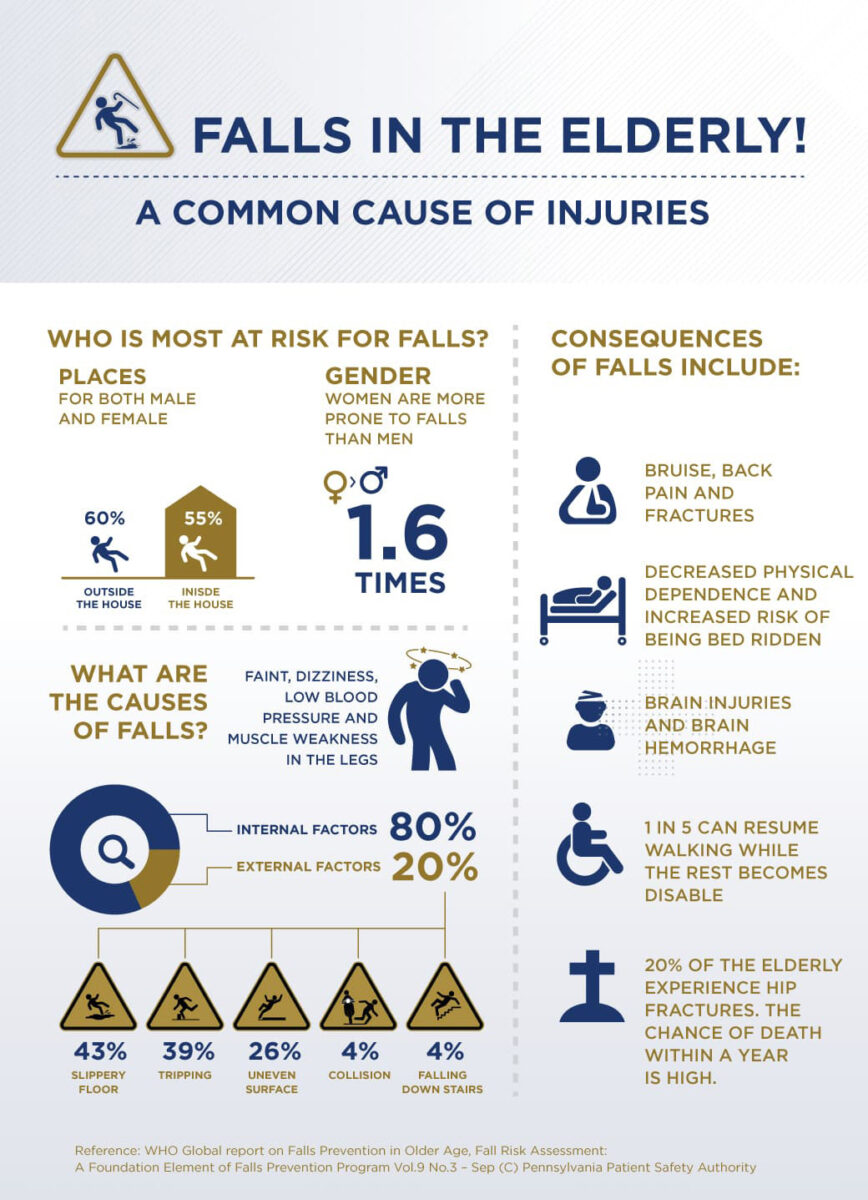As people age, changes in their physical and mental conditions may lead to many health risks, such as a decline in immune function and various organs, etc. They are more vulnerable and likely to fall easier than other age groups. Therefore, prevention is something that should not be ignored.
Consequences of Falls in the Elderly
Falls in elderly people is one of the harmful dangers and often found. Each year, one in three senior citizens will fall or slip, and about half will do so more than once. Once they have fallen and broke a bone, 1 in 5 will not be able to walk again, while some must use a wheelchair for the rest of their lives. As a result, they will lose the ability to take care of themselves and need a caregiver all the time. They will be confused and have mobility problem which will be followed by depression.
Risk Factors of Falls in the Elderly
There are 2 risk factors of falls:
- Changes in their physical conditions and have aged-related conditions.
- Environmental factors, such as the placement of furniture and other items that block their path, slippery floor, poor lighting, sleeping pills, antidepressant pills, etc.
How to Prevent Elderly People from Falls
Academic evidence indicates falls can be reduced and prevented as follows:
- Health promotion, such as walking gait training as well as wearing suitable shoes, exercising to increase muscular strength and balance.
- Healthy diets. Eat all 5 food groups or when in need of medication, consult a physician or a pharmacist.
- Use walking aids, such as walker, cane, etc.
- Lifestyle modification, such as getting up slowly to prevent blood pressure drop or fainting spells while standing, and installing handrails to keep balance.
- Drug assessment. Avoid using unnecessary or excessive drugs. If consume various medications that resulted in falls, please consult a physician.
- Change environment, such as
- Use slip-resistant bathroom mat
- Rearrange clutters
- Use appropriate lighting, especially on the staircase
- Install lighting in a dark corner of the walkway with the switch button within reach
- Keep equipment and furniture only where necessary. They must be sturdy and stand high enough from the floor to be spotted easily and not moved often.
- Bed, chair and toilet should have suitable height and not too low.
- Walkways and staircase should have rails and even steps
- Floors should be even and covered with slip-resistant material, especially in the bathroom
- Keep the hallways between adjacent rooms in the same level.
- Avoid threshold
- Avoid cluttered items, such as doormat, electrical cable, etc.
Falls are major problems in elderly people which can impact many aspects. Therefore, fall prevention will offer good quality of life.











